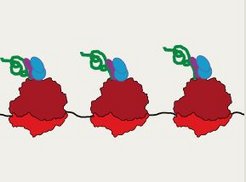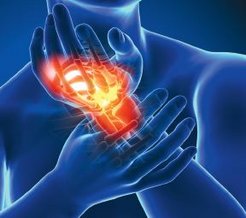Research highlights from the Yearbook
Our Yearbook 2016 showcases the research carried out at the Max Planck Institutes. We selected a few reports to illustrate the variety and diversity of topics and projects.
Congestion in the protein factory

In order for roadworthy new cars to roll off the assembly lines in an automotive plant, the assembly line speed must be correct. If the line is slower and the machines continue to work at the same pace, serious errors will occur. A similar problem arises when protein is manufactured in the cell: this is where the ribosomes – large complexes consisting of proteins and ribonucleic acids – bind individual amino acids into peptide chains. Special proteins, known as chaperones, help to fold these into the correct shape. The team headed by Sebastian Leidel at the Max Planck Institute for Molecular Biomedicine is currently studying mutated yeast cells in which the manufacture of peptide chains is sometimes slowed down due to a faulty enzyme. This disrupts the chaperone‘s activity: proteins are folded incorrectly, clump together and accumulate in the cell until they finally 'choke' it. The findings are of major interest to medicine: protein aggregates are found in neurodegenerative diseases like Alzheimer's or Parkinson's.
Conquering chronic pain

Acute pain is critical to our survival. It ensures that we pull our hand away from a hot stovetop, protect injured limbs or go to the hospital in the case of appendicitis. Chronic pain, on the other hand, is a maladaptation of the nervous system and can also be difficult to treat. In both cases, specific membrane proteins in the nerve cells are involved in the development of pain. They serve as molecular antennae, which perceive and transfer painful stimuli. In doing so, they come into contact with many other proteins. Up until now, little has been known about which proteins are relevant to one or other type of pain, and how they interact with one another. Manuela Schmidt and her team at the Max Planck Institute for Experimental Medicine are investigating which proteins in mice play a role exclusively in chronic pain. This should contribute to the development of new, effective pain treatments with a minimum number of side effects.
Experiments begin in Greifswald

After nine years of construction work and a full year of technical preparations, on 10 December 2015 the first helium plasma was generated in the new Wendelstein 7-X fusion device at the MPI for Plasma Physics (IPP) in Greifswald. At the heart of the system are 50 3.5-metre-high superconducting magnetic coils threaded onto a steel plasma vessel. The shape of the coils is the result of sophisticated optimization calculations. Wendelstein 7-X is intended to demonstrate that – like the more simply constructed tokamak, which is being operated by IPP in Garching – the complex stellarator design is suitable for use in power plants. After the first plasmas were generated for only fractions of a second, the plasma vessel was opened again in 2016 in order to install carbon tiles to protect the vessel walls. This will allow higher temperatures to be reached. In around four years it should then be possible to achieve discharges lasting 30 minutes. The start of the experiments has attracted worldwide attention.
Prototype gravitational wave spacecraft

The LISA Pathfinder satellite mission demonstrates core technologies for future gravitational-wave observatories in space like eLISA. These observatories will study low-frequency gravitational waves, which are emitted by, e. g., binary supermassive black holes or galactic binary stars. LISA Pathfinder was launched on December 3, 2015, and commenced its science operations in March 2016. LISA Pathfinder will lead to a comprehensive model of all significant physical noise sources that can be extrapolated to the eLISA mission - and has now demonstrated the key technology of a gravitational wave observatory in space, exceeding expecations.
Use of lethal force in military operations abroad

The use of weapons by German armed forces during operations abroad is under debate, particularly since the devastating airstrike on Kunduz in 2011, which claimed the lives of many civilians. This debate is taking place against the backdrop of asymmetric conflicts, in which the means and limits of the conduct of war by military forces, particularly those originating from Western democracies, are a matter of political and legal dispute. In his doctoral thesis, Carl-Wendelin Neubert from the MPI for Foreign and International Criminal Law in Freiburg investigated the use of weapons from the perspective of international and German law. He analyzed, for example, how the requirements under German law in relation to armed conflict abroad are less strict than those applicable at home, and how the strict rules governing the use of firearms at home also apply in predominantly pacified conflict zones. The legal provisions applicable to the use of lethal force during operations abroad up to now do not fulfil the requirements of the German Basic Law.




